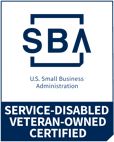Manage your Dashboard Design Process
One of the best ways for dashboard owners to ensure dashboards get designed right by the technology department is to draw out the charts and storyboards you want for your dashboard.Business users and IT need to collaborate on visual designs, viability, feasibility, usability, and desirability in order to create great analytics and dashboards.The chief complaint still remains that business users and IT often don’t get the requirements right, causing analytics and dashboarding projects to fail. This complaint is unacceptable.
In PI’s classes, we ask government employees how the requirements gathering and design process works between business users and IT. They typically do 1 or 2 discovery meetings where requirements are collected in word docs or spreadsheets. Then IT goes off and builds a prototype. A month later they usually come back with version 1. Then they re-work it a couple times over the next month or two. Eventually resulting in a dashboard solution that kind of meets their needs, but not enough to make it useful for day-to-day or strategic use on a regular basis.
The software is almost never the problem. It is almost always a disconnection between business users and IT that results in analytics and dashboarding initiatives stalling out after a couple months. A year or two later, they often get re-started by a new champion, only to suffer the same fate.

At the Performance Institute, we teach how to bring the business users and IT together to collaborate on visual designs, viability, feasibility, usability, and desirability. We guide these stakeholders through a series of exercises using Design Thinking to create great analytics and dashboards.
Design Thinking Approach:
Empathize
Empathize exercises help business users and IT to define requirements by not only considering a dashboard’s utility and product requirements but also by studying the emotional resonance/connection with end-users that the dashboard must have in order to achieve its value proposition. Think about user needs versus back-office efficiencies.
Define
Ideation exercises are geared around sketching analytics and dashboards on paper prior to trying to configure them in a software solution. Drawing out analytics and dashboards is a great way to supplement written requirements. In our classes, we explain how important it is in this step to allow for nonlinear thought when tackling nonlinear measures.
Ideate
We explain why it is important to prototype analytics and dashboards quickly and roughly using the software. Transforming ideas into something valuable requires tinkering. Don’t shy away from iterating prototypes quickly.

Prototype
Be prepared to brief your stakeholders on the first prototype and explain to them that you will likely need to iterate analytics and dashboards 4-5 times before you get them right. By the end of month 3 or 4, you should be in a position to have your stakeholders start using their analytics and dashboards in briefings. Coach people individually to prepare them for their first live briefing using their dashboards.
Test
The last step is to anchor analytics and dashboards into the agency’s culture by making people use their analytics and dashboards in briefings, for day-to-day management, and at strategic review meetings.
These best practices help to ensure your analytics and dashboards to resonate with your audience.
Take Action
Want to bring the Business Users and IT together to collaborate on your dashboard designing project? The Performance Institute offers more than 100 open enrollment courses annually and can bring any course on-site. Intensive, methodology-based courses include step-by-step processes to improve organizational management capacity. Join The Performance Institute.
The Performance Institute is a nonpartisan, private think tank seeking to improve public and private sector performance through the principles of transparency, accountability, performance, and engagement. We serve as the nation’s leading authority and repository on performance-based management practices for the government.
Learn more about our courses and how the can help your organization here.














